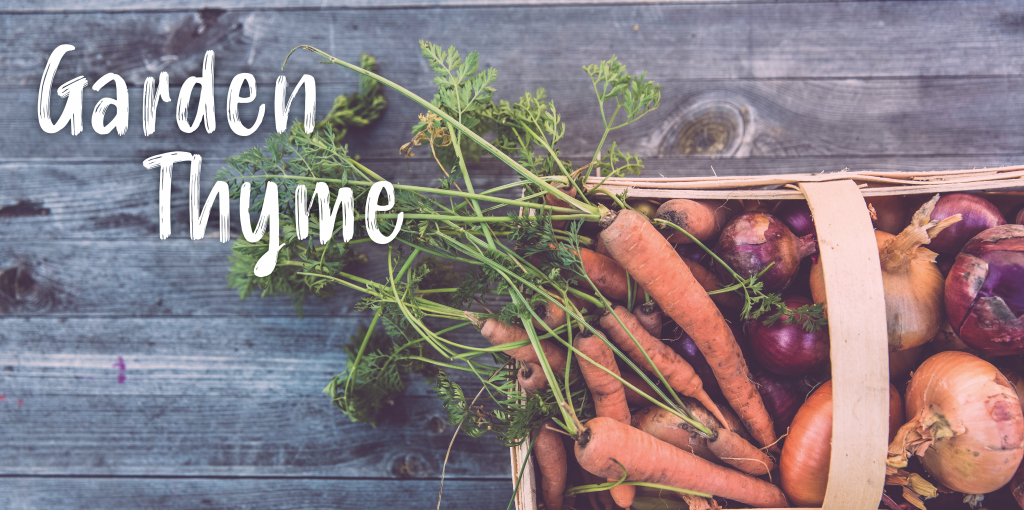Growing Your Own Food
There is nothing tastier than homegrown fruits and veggies. Most people think that they are unable to grow their own food but it is easier than you think. As a matter of fact, home food production is now the fastest growing segment of the gardening industry with young people leading this trend.
Over the next 3 months we will focus on home food production. This month we will touch on fruit trees and the next 2 months on veggies.
Fruit Tree Varieties
In Montgomery County we have a climate that is suitable to grow more fruit than you think. The most common is probably peaches, followed by plums, figs, pears, apples, persimmons, and pomegranates. Many varieties of citrus can also be grown here as well such as lemons, limes, oranges, grapefruits and kumquats. Even avocados can be grown here if the right variety is selected. When buying fruit trees make sure that they will produce fruit in our area. Chill hours are very important for selection and many places like the big box stores do not carry varieties that will produce in our area.
Citrus and Avocado
In recent years, homegrown citrus has become very popular. Many of our customers have had bumper crops of lemons the last few years because the winters have been on the mild side. Several varieties are available that handle our cold weather without much problem and will produce some of the best tasting citrus you have ever eaten. The varieties we sell are evergreen most winters here and are very easy to grow organically. Check with us in late February or early March for availability.
Avocados have gained popularity recently with many new introductions that will take our cold weather, most years. Use only the Mexican varieties. They will work the best here. Before you go searching for avocado trees keep in mind that growing avocados is not for the faint of heart. Gardeners have found them difficult in our area because they do not grow well in heavy clay soils and some of our winters can be too cold for them especially when too young before growing a heavy bark.
We currently are not carrying avocado trees.
Berries and Grapes
In our area we can also grow blackberries, blueberries, strawberries and grapes without much trouble. The blackberries are the easiest as they will tolerate most of our soils. Blueberries must have a very acidic well-draining soil and insects seem to love eating fresh strawberries lying on the ground.
What the Heck are Chill Hours
If you have ever looked into home fruit production you have probably seen the term “chill hours”. Generally speaking, chill hours are the number of hours fruit trees have been exposed to temperatures between 32 and 45 degrees. In Montgomery County the long-term average chill hours is in the neighborhood of about 450-500 hours. However, over the last ten years the average has been 650 hours. The low has been as few as 546 in the winter 2011-2012 to 1056 in the winter of 2009-2010. In the north side of Houston over the same 10 year period the average was 533 hours so you can see how different varieties will work in areas not that many miles apart.
Site Selection
Where you plant your new fruit trees is important. The location needs a soil with good drainage and must receive at least 8–10 hours of full sun. The last two years’ weather has not been favorable for the success of locally grown fruit trees. They do not like sitting in wet soils.
Bare Root or Containerized
Fruit trees are sold as bare root and containerized. Either will work well however bare root trees should be planted before the end of February, where containerized trees can be planted about any time with the dead of winter being the best.
Pollination
Pollination is one of the most important elements of fruit production. When selecting fruit trees make sure you ask whether they are self-fruitful or not. Some varieties require two different kinds to produce fruit, like the Dorsett and the Anna apple. The biggest part of pollination is the presence of bees. As bees go from flower to flower they carry with them the essence of life. Pollination is also accomplished by wind but the efficiency is far less superior than with bees. It is possible to pollinate mechanically but it is a painstaking process using an artist brush going from flower to flower.
Buy and Plant in January
The Growers Outlet will have a great selection of bare root fruit trees along with information handouts on planting and care for fruit trees suited for this area. We can also give recommendations as well.
Citrus is sold only in containers and will not be available until mid to late February.
Things to do in January
*Get fruit trees, especially bare root planted.
*January is the time to plant bulbs especially those that needed refrigeration like tulips.
*Prune established trees. It is much less stressful on your trees to do major pruning during the highest state of dormancy, which is January and February.
*Now is the time to start fertilizing established trees and shrubs with a good fertilizer like the Nitro-Phos Tree and Shrub fertilizer or Microlife 6-2-4 organic fertilizer.
*Prepare the soil in vegetable beds for the upcoming season. It is very helpful to let the soil mellow especially if organic fertilizers and beneficial organisms have been added. Now would be a great time to add several inches of compost like the Natures Way 2 year old leaf mold compost.
*Check plants like hollies, hawthorns, camellias, magnolias, and other waxy leaf plants for scale.
*Feed cool season annuals.
For great gardening products and information, come by the Growers Outlet and visit with any member of our team to get the help you need or go to our website at WWW.growersoutletinwillis.com. We have the products and knowledge to help you have the prettiest yard on the block.
